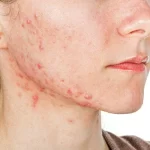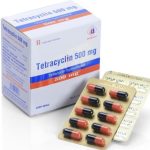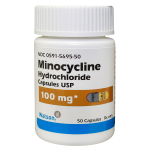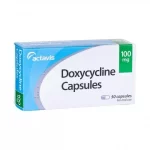Minocycline for acne is one of the most common antibiotics prescribed to those who have found no relief using at home acne remedies or conservative acne treatments. Minocycline is a form of Tetracycline used to deal with inflamed acne conditions caused by bacteria in and on the skin. It has been found particularly effective in diminishing the presence of infection and pus within acne formations, and through proper use, the antibiotic can diminish the presence of acne as much as 60 percent. Minocycline is not only used for dealing with acne related issues, but the antibiotic is commonly prescribed for conditions like urethritis, Rocky Mountain spotted fever, cholera, amoebiasis, infections of the respiratory system, and other bacteria infectious conditions.
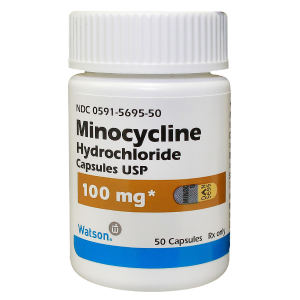
How Minocycline for Acne Works
Minocycline, when used as directed, can diminish acne irritation, redness, swelling, soreness, and infection. Since this antibiotic deals directly with the bacteria that promotes eruptions on the skin, it gets to the root cause of inflamed acne conditions. Minocycline for acne has been found very easy to take and it has less side effects when compared to some alternative antibiotic treatment options.
Minocycline is actually the generic name for the antibiotic and brand names for Minocycline include Vectrin, Solodyn, Minocin PAC, Minocin, and Dynacin. Solodyn, in particular, is offered to patients with pus filled, inflamed, red acne related conditions. Minocycline can successfully treat mild to severe acne eruptions. It should be noted however, that Minocycline does not prove successful on nodular acne formations. Basically, the antibiotic only works on acne formed from bacteria since the medication hinders the growth of the bacteria causing acne conditions. Once the bacteria growth is hindered, a patient will note the diminishment in inflamed skin conditions, and the skin will return to a normal skin color over the course of time.
Minocycline Dosage for Acne
When you are offered Minocycline for acne, you will have to take it as directed by your physician. The dosage you are required to take is highly dependent on your age, weight, and the type of Minocycline you are offered. For instance, you may be provided with Vectrin capsules at a dosage between 50 to 100 mg, or you could be provided with Dyancin capsules at the same dosage. Minocin capsules can be offered to you at the same dosage as Vectrin and Dynacin capsules, or you might be offered an oral suspension. Generic Minocycline for acne is offered in the form of a liquid, tablet, or capsule at dosages of 50, 75, or 100 mg. You can expect to take whatever form of Minocycline you are offered two times a day until the medication is gone. If you prefer to take a single dose a day, you can discuss this with your doctor; at that time, you might be offered a dosage of 100 mg one time daily.
Once you seen an improvement in your acne condition, your doctor may continue with the course of Minocycline you have been using, but your dosage may be lowered. The goal is to slowly taper your medication off as your acne disappears. Bear in mind that Minocycline is only a treatment for acne and it is in no way a cure for the condition. This means that in the future, you can end up with acne eruptions that require additional treatment. The antibiotic must be used for a short term period only; long term use of antibiotic remedies can have baneful side effects on your body and immune system functioning.
Minocycline Side Effects
There have been some documented minor side effects associated with the use of Minocycline for acne or other bacterial conditions. Some people have experienced dizziness when using the medication; if you have this experience, you may want to speak to your doctor about having your dosage adjusted. Long-term use of Minocycline has caused some people to have gums that turn blue in color, however once the patient stops using the medication, the discoloration disappears. Minocycline has been found to cause tooth discoloration in some people as well; again, the cessation of the antibiotics use ensures that this side effect also disappears.
Some might experience stomach upset, nausea, and/or vomiting when taking Minocycline for acne. If this happens, you can talk to your doctor about changing the dose you are taking. One extreme side effect that some people experience is the onset of drug-induced lupus. Again, after stopping the medication, the symptoms subside. Finally, excess exposure to ultraviolet light sources can make you photosensitive when taking this antibiotic. Minocycline is not a remedy for pregnant females or breast feeding mothers.
Minocycline for Acne versus Alternative Antibiotics
With Tetracycline, you have to have an empty stomach to take the medication and you have to consume the medication two hours before you eat because food can influence your body’s ability to absorb the medication appropriately. This is not the case with Minocycline, so people seem to have an easier time of taking this particular medication. You will have to avoid consuming dairy products when using Minocycline however, and you will also have to avoid too much sunlight or exposure to artificial ultraviolet rays since the medication can may you photosensitive.
Minocycline for acne treatment will have to be taken for a long period of time to derive maximum results; sometimes a patient will have to take the medication for a twelve-week period. This is a considerably longer period than one would have to take Tetracycline or Doxycycline for acne: both of the latter medications are often completed within an eight-week period. Since the extended use of antibiotics can cause imbalances in the body’s natural defenses, some patients may find the twelve-week course of Minocycline undesirable or cumbersome.
Like other antibiotics, this medication can interact with other medicines. Minocycline for acne can interact with an array of medications, so you need to discuss openly with your doctor any medications you are already using or plan on using before you begin a course of Minocycline. This antibiotic can interact with Sotret, Accutaine, Rimactane, Rifadin, Penicillin, Nicotinic Acid, Methortrexate, isoniazid, iron products, Permax, Sansert, Methergine, Wigraine, Ergomar, Caregot, Ergotrate, anticoagulants, antacids, and acetaminophen.

